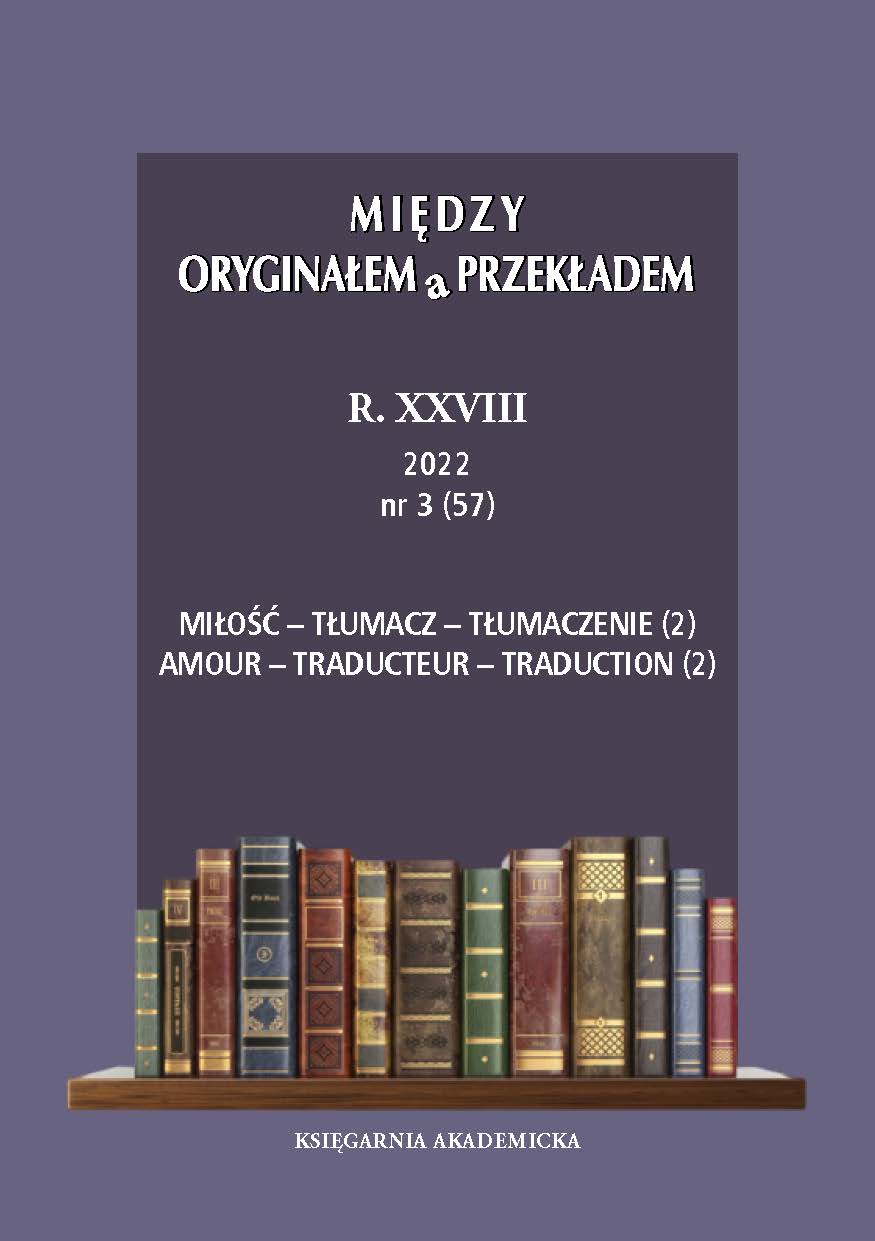Krzysztof Jarosz – traducteur multifonctionnel
À propos de la collection Frankofonia Literaria
DOI:
https://doi.org/10.12797/MOaP.28.2022.57.05Keywords:
Frankofonia Literaria, Ananda Devi, paratexts, translator’s note, afterwordAbstract
KRZYSZTOF JAROSZ – A MULTIFUNCTIONAL TRANSLATOR: ABOUT THE FRANKOFONIA LITERARIA COLLECTION
This article focuses on the translator’s roles that go beyond the traditional functions of the literary translator. Based on the example of the Frankofonia Literaria series and the works of Ananda Devi published in Polish in Krzysztof Jarosz’s translation, the author of the article demonstrates how the translator “comes out of the shadows,” in particular by serving as an exegete-interpreter and researcher. The translator makes himself visible in paratexts, such as footnotes or an afterword, which constitute a space where he presents himself and allows himself to be seen and read alongside the literary text.
Downloads
References
Devi, A. (2011), Le sari vert, Gallimard, Paris.
Devi, A. (2018), Zielone sari (trad. par Krzysztof Jarosz), Wydawnictwo w Podwórku, Gdańsk.
Devi, A. (2006), Ève de ses décombres, Gallimard, Paris.
Devi, A. (2019), Ewa ze swych zgliszcz (trad. par Krzysztof Jarosz), Wydawnictwo w Podwórku–Wydawnictwo Uniwersytetu Śląskiego, Gdańsk–Katowice.
Devi, A. (2015), L’ambassadeur triste, Gallimard, Paris.
Devi, A. (2020), Smutny ambasador (trad. par Krzysztof Jarosz), Wydawnictwo w Podwórku–Wydawnictwo Uniwersytetu Śląskiego, Gdańsk–Katowice.
Casanova, P. (2002), « Consécration et accumulation de capital littéraire », Actes de la recherche en sciences sociales. 144 : 7-20, https://doi.org/10.3917/arss.144.0007. DOI: https://doi.org/10.3406/arss.2002.2804
Delisle, J. (2002), Portraits de traductrices, Presses de l’Université, Ottawa, https://doi.org/10.2307/j.ctv16qgt. DOI: https://doi.org/10.2307/j.ctv16qgt
Genette, G. (1987), Seuils, Éditions du Seuil, Paris.
Henry, J. (2000), « De l’érudition à l’échec : la note du traducteur », Meta. 45(2) : 228-240. DOI: https://doi.org/10.7202/003059ar
Jarniewicz, J. (2012), Gościnność słowa. Szkice o przekładzie literackim, Wydawnictwo Znak, Kraków.
Morel, M. (2006), « Éloge de la traduction comme acte de lecture », Palimpsestes, Hors série : 25-36, https://doi.org/10.4000/palimpsestes.243. DOI: https://doi.org/10.4000/palimpsestes.243
Papadima, M., (2011), « Głos tłumacza w peritekście jego przekładu: przedmowa, posłowie, przypisy i inne zwierzenia », Między Oryginałem a Przekładem, 17 : 13-32.
Patte, D. et al. (1978), Pour une exégèse structurale, Éditions du Seuil, Paris.
Risterucci-Roudnicky, D. (2008), Introduction à l’analyse des oeuvres traduites, Armand Collin, Paris.
Sardin, P. (2007), « De la note du traducteur comme commentaire », Palimpsestes. 20 : 121-135, https://doi.org/10.4000/palimpsestes.99. DOI: https://doi.org/10.4000/palimpsestes.99
Tokarz, B., (2017), « Parateksty jako wyraz koncepcji przekładu », Przekłady Literatur Słowiańskich. 8(1) : 15-35, en-ligne : https://www.journals.us.edu.pl/index.php/PLS/article/view/6812.
Downloads
Published
Issue
Section
License

This work is licensed under a Creative Commons Attribution-NonCommercial-NoDerivatives 4.0 International License.






